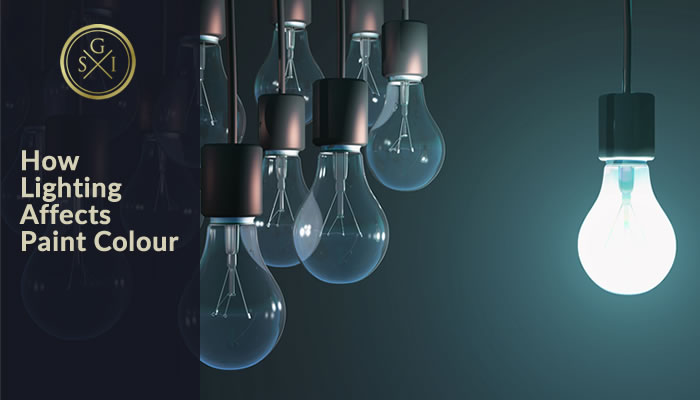Choosing paint colours is one of the most exciting parts of a home renovation. Whether you opt for pastels, neutrals or bold and bright, paint has the potential to completely transform any space in your home.
However, too often people don’t consider how lighting affects paint colour. That moss green you chose for your family room could become swampy under some fixtures, while the bulb you put over your kitchen island could turn that warm burnt red into a bright orange mess.
For example, I have had many experiences where I have helped a client select paint while they had incandescent bulbs, only to have them change them out for compact fluorescent ones at a later date…and then everything turns green!
It is imperative that you select your paint colours under the same light you will be using in the room/your home. And essential that all the lights cast either a warm or cool light. Otherwise, it will be a jumble of different light temperatures, affecting the colours in a very negative way.
Light Fixtures & Paint Colours 101
Light is a spectrum of colours, composed of red, yellow, green, blue, indigo and violet; some colours are impacted more by light than others. The closer to white, the more reflective it will be.
Colour temperature is measured in a unit called a Kelvin (K). For example, a low temperature creates a cozy and warm effect, while a high one creates a cool effect.
Household fixtures are generally found in temperatures of 2700K (warm incandescent), 3000K (warm white halogen) and 3500K (household fluorescent). Typically, colour temperatures over 3500K are used in more commercial applications (think schools and hospitals).
Let’s take a look at three types of light fixtures:
- Task: This is just what it sounds like; it serves a purpose for a specific job, whether that’s reading, cooking or sewing. An example is the ones in your kitchen cupboards that illuminate your glassware.
- Ambient: Sometimes called general lighting, this refers to the primary source of illumination for a certain room. Think overhead lights in your bathroom ceiling, or natural light streaming through a bedroom window.
- Accent: It showcases your furniture and decor, highlighting a room or indoor/outdoor area. Maybe you want to put the focus on a piece of artwork, or have the perfect glow over your table for a dinner party.
Now, depending on the area you’re renovating you have many bulb choices, including:
- Halogen bulbs. These produce brighter, white light that is similar to sunlight.
- Fluorescent bulbs. They generate blue that mutes warmer colours but intensifies blues and greens.
- Incandescent bulbs, which produce yellow that intensifies warm colours.
- LED bulbs come in a variety of temperatures from warm to cool light.
Read: Do You Really Need a Colour Consultation?
And, don’t forget the finishes! A big part of choosing paint colours is deciding on the finish (e.g., gloss, semi-gloss, flat), as they are affected by your lighting choices as well. The glossier the finish is, the more the beams will bounce off of it.
In other words, the higher the sheen, the more the imperfections will be noticeable. That is why so many people opt for a flat paint finish on the walls. The flat paint finish hides everything!
It can be nearly impossible to understand all of your home decor and renovation options around painting and lighting; your best bet is to sit down with an interior design pro and discuss your goals.
I can help you choose lights for your home that will truly complement your paint colours. Book your colour consultation with me today.

